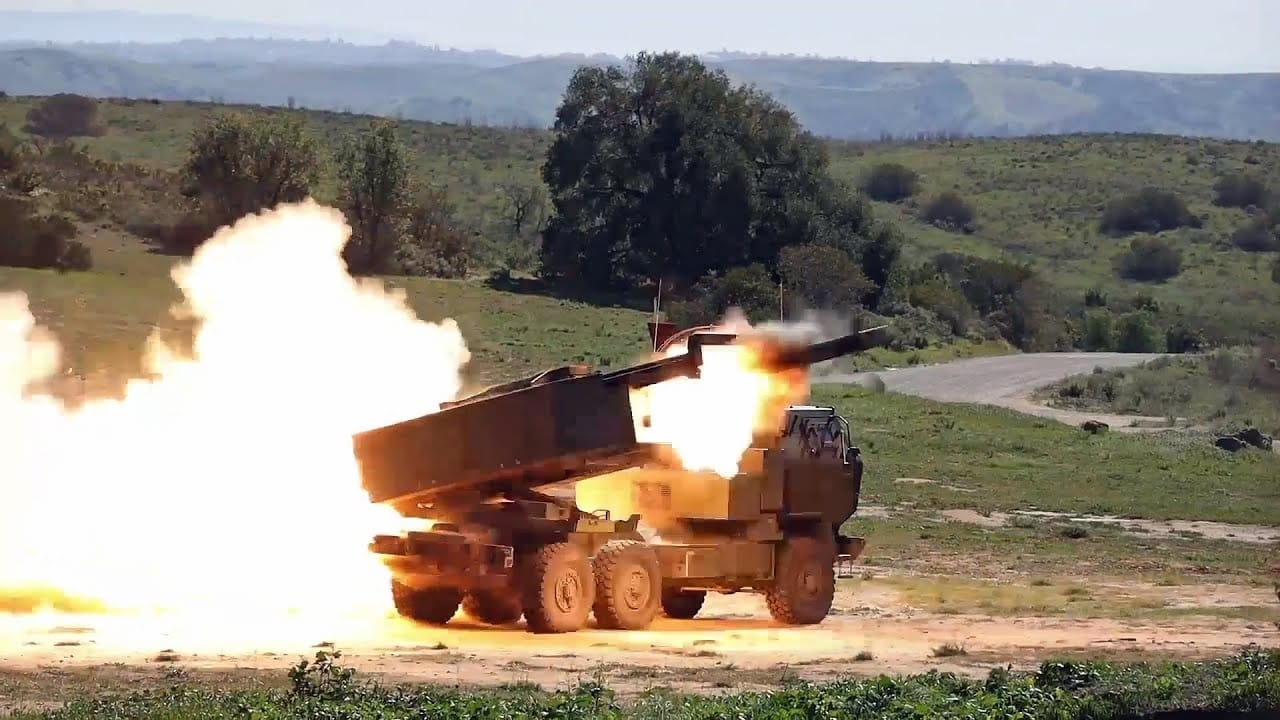Last month, President Joe Biden announced a $700 million drawdown package for Ukraine. As part of the aid for Kyiv, the United States Department of Defense (DoD) included four M142 High Mobility Artillery Rocket Systems (HIMARS), which are capable of launching multiple, precision-guided rockets. In addition, the DoD included Guided Multiple Launch Rocket Systems that have a range of striking targets more than 40 miles away.
“What the HIMARS will allow them to do is to get greater standoff. Right now, the howitzers we provided them have about a 30 km range; the HIMARS have more than twice that, which will allow them — even with fewer systems — greater standoff,” Colin H. Kahl, undersecretary of defense for policy, told reporters during a June 1 briefing at the Pentagon.
“These are precision guided systems with extended range,” Kahl added. “For high value targets, that, that allows them to keep some of the pressure off of Ukrainian forces on the front, [which] we think these systems will be very useful.”
Shoot and Scoot System
The HIMARS, which was developed by defense giant Lockheed Martin, is one of the most effective mobile rocket launch systems currently in service with the United States military. It is essentially a rocket launcher that is mounted on the back of a dedicated truck. Unlike, towed artillery, which needs to be set up and then fired, the HIMARS is self-propelled and can allow the vehicle to drive away immediately after firing.
This provides both range and mobility and enables for quick strikes while avoiding retaliation from the enemy.
As part of an agreement with Kyiv, the United States is only supplying rockets that have a range of just over 40 miles. The Ukrainian Armed Forces have reportedly begun to use HIMARS multiple rocket launcher systems in the Zaporizhzhia region, where it is seen to be a force multiplier for Ukraine in its war with Russia.
More Needed
To date, only four of the HIMARS launchers are in the fight, while four more are set to arrive this month. Ukrainian officials have said for the weapons to really make a difference, as many as 300 would be needed.
“So far they seem to be a quite useful addition,” Rob Lee, a Russian military specialist at the Foreign Policy Research Institute in Philadelphia and a former U.S. Marine officer, told The New York Times last week. “They will help hinder further Russian advances, but they won’t necessarily mean Ukraine will be able to take back territory.”
Kyiv has also been pushing for not only more rocket launchers, but longer-range munitions. The Biden administration has been cautious in what it has provided, however, and has called for assurances from Ukraine that the weapon wouldn’t be used against targets within Russia. Yet, as the Kremlin’s forces have made gains in the eastern Donbas region, Ukraine has argued that it needs rockets that could strike targets hundreds of miles away to gain any critical advantage on the battlefield – and that could be a “stick in the wheel” of Moscow’s war effort.
Currently, the fighting in the Donbas has become an artillery slug match, but Ukraine is forced to play by a different set of rules than the invader. That didn’t turn out so well for the United States when it tried to play by those rules in past conflicts. The hope now is that Ukraine can still come out on top while having to abide by the rules.
Now a Senior Editor for 1945, Peter Suciu is a Michigan-based writer who has contributed to more than four dozen magazines, newspapers and websites. He regularly writes about military hardware, firearms history, cybersecurity and international affairs. Peter is also a Contributing Writer for Forbes.

